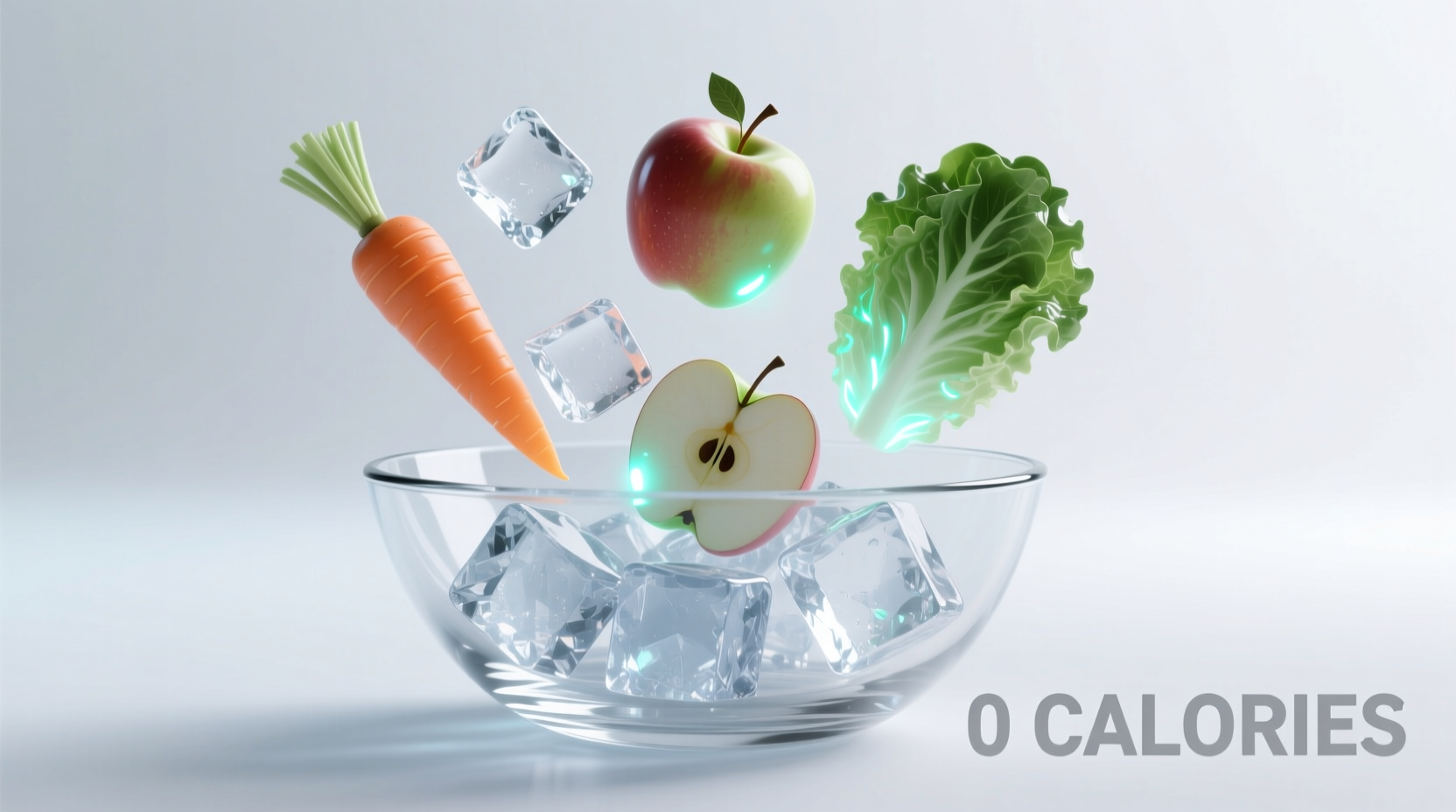Many people searching for "what food has no calories" are hoping to find magic solutions for weight management. Let's cut through the misinformation and examine what science actually tells us about ultra-low-calorie foods.
The Zero Calorie Myth: What Science Actually Says
Despite popular claims about "negative calorie foods," no food truly contains zero or negative calories. The concept suggests certain foods require more energy to digest than they provide, but research consistently disproves this. According to the American Journal of Clinical Nutrition, even the lowest-calorie foods still contribute some energy to your diet.
The thermic effect of food (TEF)—the energy required for digestion—typically accounts for only 5-15% of a food's caloric value. For example, celery contains about 10 calories per stalk, but your body only uses 1-1.5 calories to process it. You still gain a net 8.5-9 calories.

Truly Negligible Calorie Options
While nothing has zero calories, these foods contribute so little they're effectively calorie-free in normal portions:
- Water - 0 calories (the only true zero-calorie option)
- Black coffee - 0 calories (without milk/sugar)
- Plain tea - 0 calories (without additives)
- Celery - 10 calories per medium stalk
- Cucumbers - 8 calories per 1/2 cup sliced
- Lettuce - 5 calories per cup shredded
- Zucchini - 10 calories per 1/2 cup cooked
| Commonly Believed "Zero Calorie" Foods | Actual Calories (Per Standard Serving) | Thermic Effect (Estimated) |
|---|---|---|
| Celery | 10 calories | 1-1.5 calories |
| Grapefruit | 52 calories | 3-8 calories |
| Apples | 95 calories | 5-14 calories |
| Broccoli | 55 calories | 3-8 calories |
Why the Myth Persists
The "negative calorie food" concept gained traction through diet books and social media influencers promising easy weight loss solutions. However, the USDA FoodData Central database confirms all whole foods contain measurable calories. Even foods with extremely low energy density still contribute some calories to your daily intake.
Practical Strategies for Low-Calorie Eating
Instead of chasing mythical zero-calorie foods, focus on these evidence-based approaches:
- Increase volume with high-water foods - Cucumbers, watermelon, and broth-based soups create fullness with minimal calories
- Master portion control - Even healthy foods contribute to calorie intake when consumed in large quantities
- Focus on nutrient density - Choose foods that provide vitamins and minerals per calorie consumed
- Read labels carefully - Many "zero calorie" products contain artificial sweeteners that may affect appetite regulation
Important Considerations
When incorporating very low-calorie foods into your diet, keep these limitations in mind:
- No single food can compensate for an overall unhealthy diet
- Extreme restriction of calories can slow metabolism and cause nutrient deficiencies
- The psychological impact of restrictive eating often leads to rebound weight gain
- Individual calorie needs vary based on age, gender, activity level, and health status
According to the Centers for Disease Control and Prevention, sustainable weight management comes from balanced eating patterns rather than focusing on individual "magic" foods.
Building a Sustainable Approach
Rather than searching for foods with no calories, develop a balanced approach that includes:
- Non-starchy vegetables making up half your plate
- Mindful eating practices to recognize hunger/fullness cues
- Regular physical activity tailored to your abilities
- Adequate protein and fiber to maintain satiety
- Realistic goals focused on health improvements rather than just weight loss
Frequently Asked Questions
Does lemon water have zero calories?
Lemon water contains approximately 1-2 calories per cup when made with one medium lemon's juice diluted in water. While technically not zero calories, this is negligible for dietary purposes. The American Heart Association confirms that plain lemon water contributes minimal calories to your daily intake.
Can you eat unlimited amounts of zero calorie foods?
Since no foods actually have zero calories, eating unlimited amounts will eventually contribute to your daily calorie intake. Even very low-calorie vegetables contain some energy. The Academy of Nutrition and Dietetics recommends focusing on portion sizes and overall dietary patterns rather than unlimited consumption of specific foods.
What's the lowest calorie food you can eat?
Water is the only true zero-calorie option. Among solid foods, celery (10 calories per stalk), cucumbers (8 calories per 1/2 cup), and lettuce (5 calories per cup) have the lowest caloric density. According to USDA FoodData Central, these foods provide minimal calories while delivering hydration and some nutrients.
Do negative calorie foods help with weight loss?
No scientific evidence supports the existence of negative calorie foods. Research published in the American Journal of Clinical Nutrition shows all foods contribute net positive calories. Sustainable weight loss comes from creating a moderate calorie deficit through balanced eating and physical activity, not from specific "negative calorie" foods.
Is black coffee really zero calories?
Plain black coffee contains approximately 2 calories per 8-ounce cup, which nutritionists consider negligible. The FDA allows foods with less than 5 calories per serving to be labeled as zero calories. Just remember that adding milk, sugar, or flavorings significantly increases the calorie content.











 浙公网安备
33010002000092号
浙公网安备
33010002000092号 浙B2-20120091-4
浙B2-20120091-4